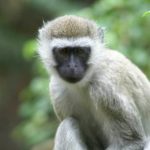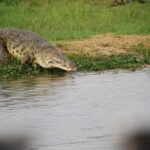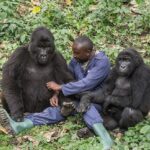The pelicans are distinctive large water birds often seen swimming in tight flotillas on open lakes of the Great Rift Valley which can be easily identified both at rest and in flight. Pelicans can be separated from each other by their size, color and behavior.
In Uganda we have the Great white pelican (Pelecanus onocrotalus) and the Pink-backed pelican (Pelecanus rufescens), which you can come across along the Kazinga Channel Cruise in Queen Elizabeth National Park with Lakato Safaris.

Pelicans are massive, black and white, with a pink and yellow bill pouch which measures around 178cm. Both sexes have a yellow bill with a pink tip and an orange knob where the bill joins forehead. Female pelicans have orange and yellow facial skins while the males have purplish ones.
An immature pelican is greyish brown with dull bare parts, the juvenile birds are much dark and browner and the adult birds show extensive black flight feathers in contrasting with greater and median coverts. During breeding an adult pelican has a pinkish hue and a short ragged crest and produce a characteristic continuous low cacophony growling sound while the duller non breeding adult has a greyish bill. A female pelican lays 2-3 eggs and incubation takes 29-36 days. The chicks are cared for by both parents by feed by picking the partially digested fish from the adults pouch.
Pelicans normally fish together in large flocks, feed almost entirely on fish like tilapia and Haplochromis along with amphibians which they hunt by forming a semi- circle around the prey while driving it to the shallow waters for easy catch on the open lakes of the Rift Valley swimming forward in a horse shoe pattern with their bills open ready to catch its prey.

Pelicans are listed as species of List Concern under the red list of International Union for Conservation of Nature.
Try Our Top Safaris










